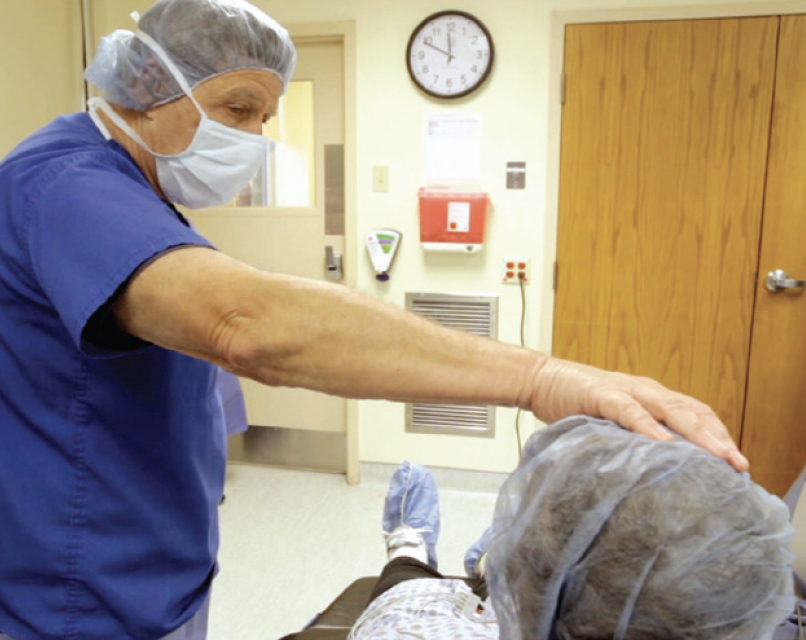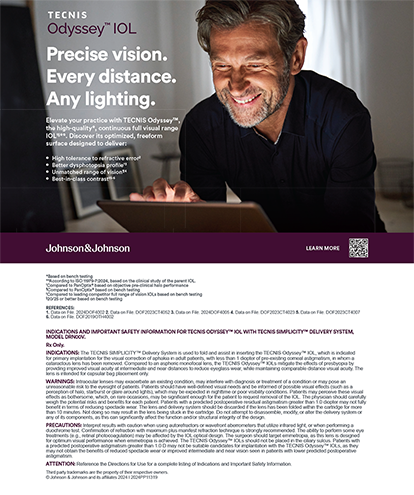Origins is a new column focusing on the genesis of well-known procedures, techniques, technologies, studies, and more.

When I started residency, intracapsular cataract extraction with 7-0 polyglactin sutures (Vicryl, Ethicon) was widely performed, aphakic contact lenses were the state of the art, IOLs were controversial, and OVD use was not universally accepted.
As I began performing surgery, extracapsular cataract extraction was a cutting-edge technique. Because neither my professors nor I had experience with it, learning the procedure required me to think outside the box. Early exposure to extracapsular cataract extraction primed me to accept new techniques and technologies more readily.
ROOM FOR IMPROVEMENT
Retrobulbar injections made me uneasy. They required the intravenous administration of a significant amount of sedation in elderly patients, many of whom experienced dysphoria during the postoperative recovery period. Complications such as retrobulbar hemorrhage and penetration of the globe, though rare, were possible. Postoperative patching was required; patients could not see for several hours after surgery. They typically had to wait until the next day to experience the joy of improved visual acuity.
When I began performing laser iridotomy, I started to suspect that the iris was not as sensitive as I had been led to believe. I wondered if retrobulbar injections could be avoided during cataract surgery. In many cases an eye moved intraoperatively, possibly owing to an incomplete block, without an issue. I would complete the case by talking the patient through it. Then, I learned to perform radial keratotomy from Charles Casebeer, MD. He developed the technique of starting the incisions at the limbus and extending them toward the corneal apex and trusted patients to hold their eyes steady. I had an epiphany: If patients could minimize eye movement during radial keratotomy surgery, perhaps cataract surgery could be performed safely on eyes that could move. If the structures of the anterior chamber were less sensitive than commonly thought, could injection anesthesia be unnecessary?
SHIFTING THE PARADIGM
I gradually reduced the volume of injection, first from 5 to 4 mL and eventually to 1 mL, which most likely had no effect. I performed 75 cataract procedures with only topical anesthesia. If a patient experienced discomfort, then an intracameral injection of preservative-free tetracaine was performed—a new modality to my knowledge.
I combined topical anesthesia with sutureless clear corneal incisions to create a technique I dubbed Fichman Quick Sight. To my knowledge, I was the first surgeon in history to sit a patient up in the OR after surgery and ask them to read the clock (Figure). I operated on the steep axis and moved the incision away from the limbus, sometimes pairing it with a true astigmatic keratotomy to address mild to moderate astigmatism.

Figure. Following surgery, Dr. Fichman has a patient read the clock in the OR.
In the early days, I traveled to cities across the United States and Europe, notified surgeons within a 100-mile zone, and delivered presentations describing Quick Sight in airport hotel meeting rooms. It became a well-accepted procedure in a relatively short period.
I now use the ORA system (Alcon) to provide more precise IOL power. My goal is to deliver the best unaided vision possible immediately after surgery—quite a departure from 7-0 polyglactin sutures and aphakic spectacles. I am grateful that I could shift the paradigm on anesthesia for cataract surgery 30 years ago.1 The reaction from patients when I have them read the clock in the OR still thrills me.
1. Fichman RA. Use of topical anesthesia alone in cataract surgery. J Cataract Refract Surg. 1996;22(5):612-614.




